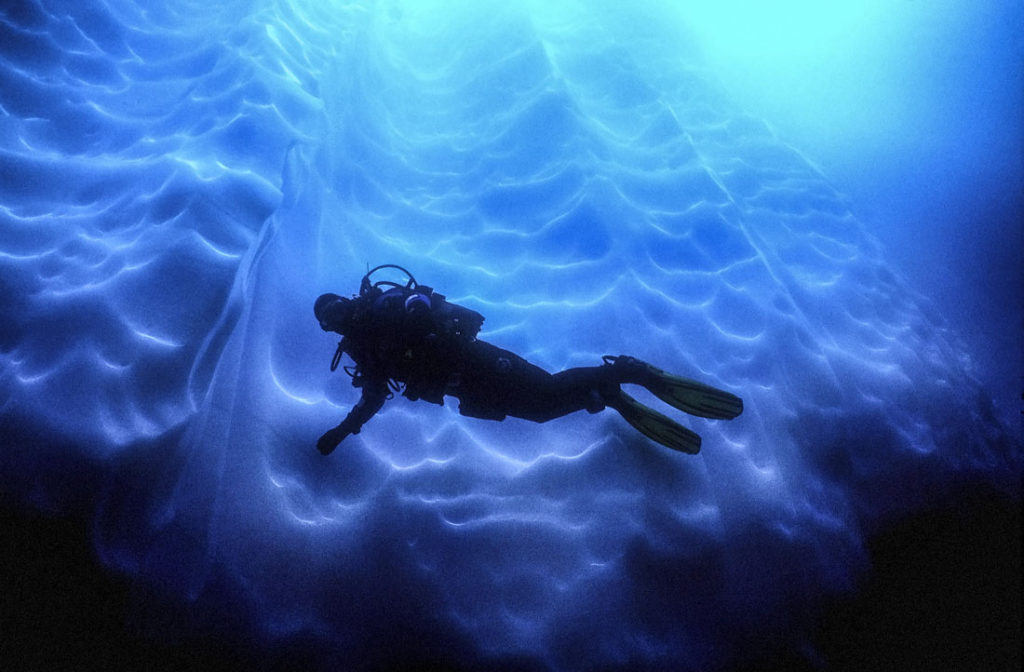
Text and photos by Yvette Cardozo
Vol. 21, No. 1/2
September/October, 2017
For me, scuba diving in Antarctica was the ultimate bucket list trip. I’ve been diving a long time, and after moving to Seattle, bought a dry suit and discovered cold water diving. But Antarctica? The place of internationally known explorers?
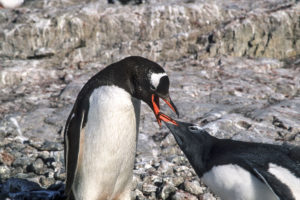
Well, yes. On my trip, there were 15 divers aboard a Russian icebreaker along with 45 birders who were also on their ultimate dream voyage to see birds that can’t be seen anywhere else.
Interestingly, the divers split almost evenly into men and women and some folks prepared more than others. We women prepared extensively. I borrowed an H-valve scuba tank since I had never worked with one before. The setup lets you attach two separate regulators … with complete first and second stages … to a single tank.
I also bought a special vest to hold the 35 pounds of weights I’d need for diving in a drysuit since I knew I couldn’t hop into a Zodiac boat fully loaded “like the guys.”
And I practiced … locally and on a week long liveaboard Canadian trip.
That first checkout dive in Antarctica was semi disastrous. People dropped weight belts, lost fins, one diver dumped a tank atop a mask, smashing it to pieces. Um, well, not all people. Just the guys. But fear not, by the second day, we all had it sorted out.
And then began the ultimate dive adventure.
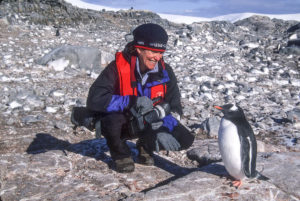
Okay, Nat Geographic-type documentaries show explorers diving under ice and coming up into air temperatures of 30 below. I don’t know where and when they dove but we were in Antarctica during late summer down there … February. The water temp was a consistent 28F (salt water stays liquid to a lower temperature than fresh) and the air temp hovered at 25F, which is really not that bad.
Our second dive day more than made up for our checkout trip. Gale force winds had died and the sun came out, adding a golden glow to the towering walls of snow that surrounded Mikkelsen Harbour. Chunks of ice floated in the bay and between them, we could see penguins frantically leaping out of the water.
“Leopard seals!” shouted one of our dive guides. Sure enough, silver heads broke the surface. We grabbed our snorkels and went in without tanks.
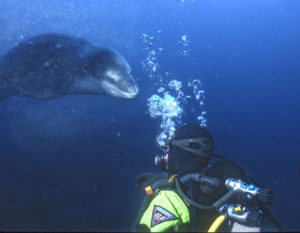
Leopard seals get their name from their spots … and their viciously predatory nature. But they eat penguins, not people … at least not usually. A huge old bull circled curiously, spiraling ever closer until his face was hardly a foot from mine. I could count the hairs on his cheeks. He poked his nose practically into my mask, darting forward in a feint that the guide later explained was not so much a threat as a signal, “Hey, I’m bigger than you.” And he certainly was.
The next afternoon, the entire dive group played hooky to visit Neko Harbour, one of the few penguin colonies with chicks this late in the season and also our only chance to set foot on the Antarctic mainland rather than offshore islands. The birds spread across a rising slope of snow furrowed with ditches worn by thousands of penguin feet.
It was practically a set from Disney … almost too good to be real, with obliging penguins on the beach, some sunning themselves, some preening, many molting with patches of down still fluffing across their bodies.
As the setting sun turned all this snow gold and then pink, we motored in the Zodiacs down to the far end of the bay where three humpback whales floated. They blew clouds of fishy breath our way and rumbled like elephants. They were so close, we could count the bumps on their noses.
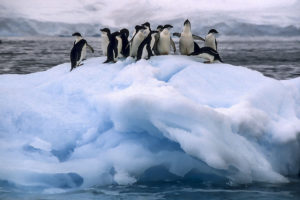
All this is a very long way from the early 1980s when I made my first trip to Antarctica and visitors to research stations were greeted with parties.
Now there are companies taking skiers to the pole, climbers to interior peaks, kayakers paddling the peninsula and other companies offering scuba.
Only 15 years ago, the tourist total to Antarctica was 13,571. Last season — 2015/16 — the total was 38,478.
Meanwhile, the scenery for us was like nowhere else. We would slide in the water and spend our 30-40 minutes and when we came up, what greeted us was a wall of snowy rock, fissured glaciers flowing to the waterline and huge towers of ice that sometimes collapsed before our eyes.
At night, we had lectures. And when we weren’t diving, we visited penguin colonies and research stations.
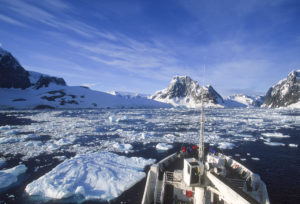 At Vernadsky station we learned about how fast temperatures are rising at the poles. The Nearby original British station was now a museum, left just as it had been in the 1940s. The pantry is still stocked with old packs of biscuits, tins of art deco tuna and an ancient can of Ovaltine along with the original typewriters, slide rules, goggles and crampons.
At Vernadsky station we learned about how fast temperatures are rising at the poles. The Nearby original British station was now a museum, left just as it had been in the 1940s. The pantry is still stocked with old packs of biscuits, tins of art deco tuna and an ancient can of Ovaltine along with the original typewriters, slide rules, goggles and crampons.
Another day, we anchored at Pleneau Island for a dive in a graveyard of old ice chunks. Some of them were bigger than houses, but they were grounded so there was no danger of them rolling over on us.
First we cruised the bergs, threading the Zodiac around sculpted blocks with deep blue furrows and feathered edges. Then we anchored next to one, dropped into the water and slid down it to the bottom at 85 feet. The side was dimpled like a golf ball and sunlight sparkled off the irregular edges. There were spires of white and small pockets of cobalt, all of it glistening like it had been rubbed with oil.
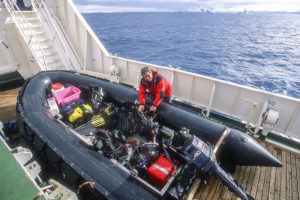
Our last dive was an island named Astrolabe that lies just off the northern tip of the Antarctic Peninsula. Nothing much on the bottom but that’s not what we had come for.
Five minutes’ swim from the Zodiacs, we ran into a wall of ice … a chunk the size of an office building. We were swimming along its deep trenches when we realized we had company. A female leopard seal pirouetted around us, twisting and spiraling at the same time. She would come up to one of us, shove that grinning face into ours and hang for just a second before folding over and darting away.
She did this ballet for 15-20 minutes until I was so cold I could hardly breathe. By now we’d been swimming in that slush for an hour. Reluctantly, we shivered our way back to the boat.
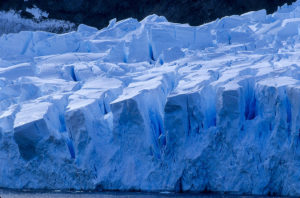
And it was snowing. After an unparalleled near week of sun, the weather had stayed good just long enough for our last dive.
INFO
Antarctica is NOT for novice divers. Nor is it where you want to do your first cold water dive. Divers need to be well acquainted with drysuits and cold water diving in general.
The dives on my trip were fairly easy … essentially drops along sloping or straight walls to 60-80 feet with viz around 50 feet. No current, usually no muck, nothing technical but, frankly, the temperature (28-32F degrees) made things hard enough. Nearly everyone complained of cold hands and feet. We dove alongside grounded icebergs but did not dive under ice which meant we did not need ice diving safety lines.
Oceanwide Expeditions runs regular scuba trips to Antarctica during the Antarctic summer months, late January into March.
